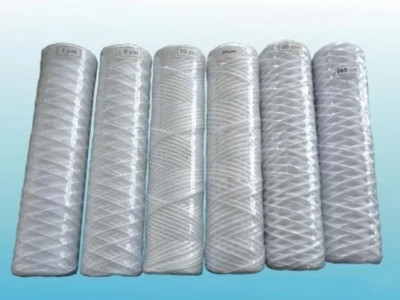FRP tanks, also known as fiberglass reinforced plastic tanks, offer numerous benefits when it comes to their application in the water treatment industry. These advantages make them a popular choice for various water treatment processes. In this section, we will explore the benefits of using FRP tanks and why they are preferred over other materials.
Durability and Longevity
One of the key advantages of FRP tanks is their exceptional durability and longevity. Made from a combination of fiberglass and resin, these tanks have a high strength-to-weight ratio, allowing them to withstand harsh operating conditions such as pressure changes and temperature variations. Unlike traditional materials like steel or concrete, FRP tanks do not corrode or degrade over time, ensuring long-term performance and reliability.
Corrosion Resistance:
Another significant benefit of FRP tanks is their excellent corrosion resistance. Water treatment facilities often deal with aggressive chemicals and corrosive environments that can damage conventional tank materials. However, FRP tanks are highly resistant to corrosion from chemicals commonly used in water treatment processes. This resistance ensures that the tank remains intact and prevents any contamination or leakage into the treated water.
Lightweight and Easy Installation:
FRP tanks are lightweight compared to other tank materials such as steel or concrete. This characteristic makes them easier to transport, handle, and install on-site. The lightweight nature of FRP tanks also reduces the need for heavy equipment during installation, resulting in cost savings for water treatment facilities.
Cost-effectiveness:
When it comes to cost-effectiveness, FRP tanks offer several advantages. Firstly, their low maintenance requirements contribute to reduced operational costs over time. As mentioned earlier, FRP tanks do not corrode or degrade easily; therefore, they require minimal repairs or replacements throughout their lifespan. Additionally, the lightweight nature of FRP tanks reduces transportation costs during installation.
Potable Water Treatment:
One of the primary applications of FRP tanks is in potable water treatment systems. These tanks are used for storing and treating drinking water before it is distributed to consumers. The durability and corrosion resistance of FRP tanks make them suitable for this critical application, ensuring the safety and quality of the treated water.
Wastewater Treatment:
FRP tanks are widely used in wastewater treatment facilities for various purposes. They can be employed as equalization tanks, holding tanks, or process vessels in different stages of the wastewater treatment process. The excellent chemical resistance of FRP tanks allows them to withstand harsh environments and corrosive substances commonly found in wastewater.
Desalination Plants:
Desalination plants convert seawater into fresh water by removing salts and impurities. FRP tanks play a vital role in these plants by providing storage solutions for both feedwater and product water. The lightweight nature of FRP tanks simplifies their installation in desalination plants, making them a preferred choice over traditional materials like steel or concrete.
Factors to Consider When Choosing an FRP Tank for Water Treatment
When choosing an FRP tank for water treatment, there are several important factors that need to be considered. These factors will ensure that the tank meets the specific requirements of the water treatment process and provides optimal performance.
One of the first considerations is the design and capacity requirements of the tank. The tank should be designed to accommodate the desired volume of water and should have sufficient structural integrity to withstand the pressure and load it will be subjected to. Additionally, factors such as space availability and installation constraints should also be taken into account.
Chemical compatibility is another crucial factor when selecting an FRP tank for water treatment. Different water treatment processes involve the use of various chemicals, such as disinfectants or pH adjusters. It is essential to ensure that the materials used in constructing the tank are resistant to these chemicals and can withstand their corrosive effects. This will prevent any degradation or damage to the tank over time.
Installation and maintenance considerations are also important. FRP tanks are known for their lightweight nature, which makes them easier to transport and install compared to other types of tanks. However, it is still necessary to evaluate if special equipment or procedures are required for installation. Additionally, regular maintenance is crucial for ensuring long-term performance and durability of the tank. Therefore, it’s important to consider factors such as access for inspection, ease of cleaning, and availability of spare parts when choosing an FRP tank.
By carefully considering these factors, water treatment facilities can select an FRP tank that not only meets their specific needs but also offers long-term reliability and cost-effectiveness. Proper consideration ensures that the chosen FRP tank integrates seamlessly into existing systems while providing efficient operation throughout its lifespan.




